- Log in
-
- Sydney Overseas Office
- London Overseas Office
- Toronto Overseas Office
- Los Angeles Overseas Office
- New York Overseas Office
- Ulaanbaatar Overseas Office
- Dubai Overseas Office
- New Delhi Overseas Office
- Manila Overseas Office
- Jakarta Overseas Office
- Hanoi Overseas Office
- Kuala Lumpur Overseas Office
- Singapore Overseas Office
- Bangkok Overseas Office
- Map
- Sydney Overseas Office
- London Overseas Office
- Toronto Overseas Office
- Los Angeles Overseas Office
- New York Overseas Office
- Ulaanbaatar Overseas Office
- Dubai Overseas Office
- New Delhi Overseas Office
- Manila Overseas Office
- Jakarta Overseas Office
- Hanoi Overseas Office
- Kuala Lumpur Overseas Office
- Singapore Overseas Office
- Bangkok Overseas Office
Special Diet Options
-
-
-
Tips for Vegetarians
-
11K
2
6
-
-
bibimbap
gimbap
mung_bean
noodles_in_cold_soybean_soup
acorn_jelly_salad
vegan
Halal_food
vegetables
vegan_travel
-
-
For various reasons, from protecting the environment to personal conviction and health awareness, vegetarians continue to increase in number every year in Korea and, subsequently, restaurants, bakeries, and dessert cafes for vegetarians are also on the rise. Some restaurants are also actively adding special menu items (or options) for vegetarians to their original menu. Read on for a guide to dining in Korea as a vegetarian and additional tips for vegetarian travelers.

Tips for ordering
Korean food is often prepared with meat and fish broth and many restaurants don’t have separate menus prepared for vegetarians. So if you are a vegetarian, it's best to clearly inform the server about your diet in advance and provide detailed instructions on ingredients that need to be excluded. Sometimes, language barriers may hinder communication so it's helpful to prepare Korean phrases such as “I am a vegetarian” or “I cannot eat meat, eggs, and seafood” in advance using a translator.
Food recommendations for vegetarians
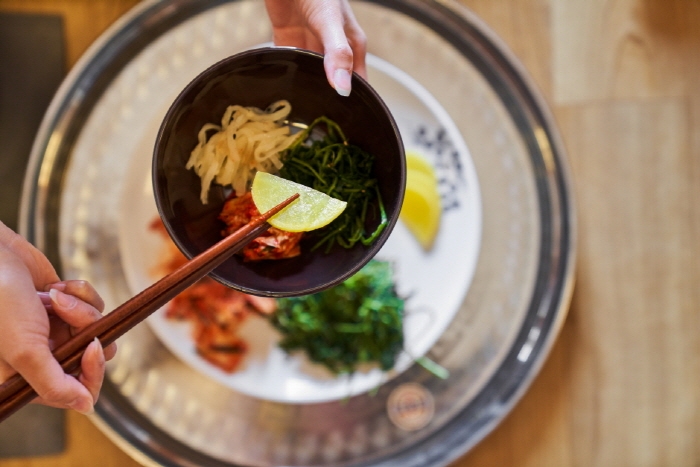
Temple food
This is food for practicing Buddhist monks so it does not use any meat at all. Recently, temple food has been highlighted as a healthy food, which has led to an increase of many temple food restaurants. Temple food can now be found outside actual temples and has become a popular recommended meal option for many vegetarians traveling in Korea.
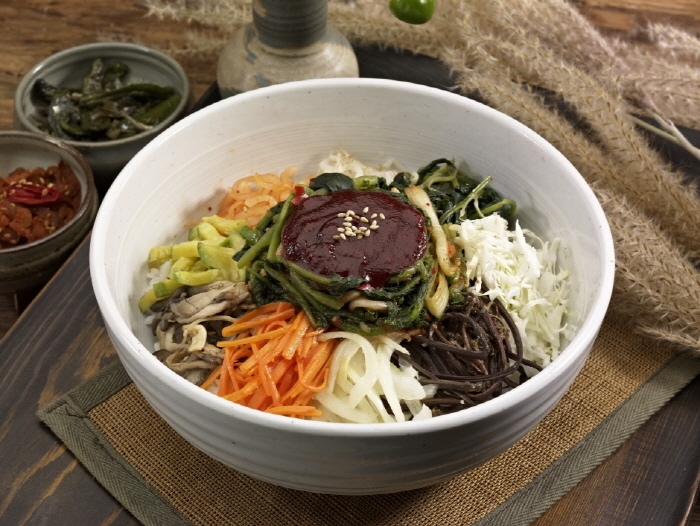
Bibimbap
This dish is made of mixed vegetables and rice with gochujang (hot chili paste) or soy sauce. Most bibimbap menus include meat and eggs as toppings so ask to exclude these ingredients when you order.
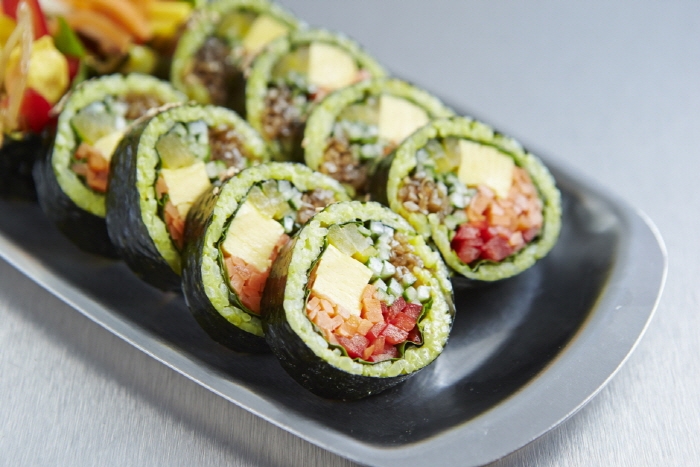
Gimbap
Gimbap is rice rolled with many different ingredients on a sheet of laver and served in bite-sized slices. If a gimbap contains a special ingredient that is usually not found in regular gimbap rolls, you’ll be sure to know by its name. For example, “chamchi gimbap,” or tuna gimbap, contains canned tuna and “cheese gimbap” contains cheese. Vegans are recommended a basic vegetable gimbap (“yachae gimbap”), which mostly consists of carrot, burdock root, spinach, and seasoned radish. Depending on the restaurant, even vegetable gimbap may contain ham, eggs, and crab-flavored meat so check with the restaurant before making your order.
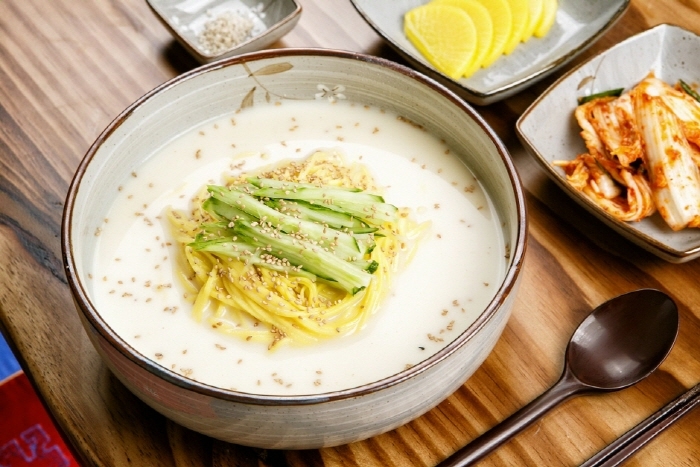
Kongguksu (noodles in cold soybean broth)
This is a popular summer menu that adds noodles to cold soup made of ground beans, and is a suitable dish for vegetarians. Take note that eggs may be placed on top as a garnish.

Chaeso jeon (vegetable pancake)
Jeon is a Korean-style pancake made with various ingredients mixed in a flour batter. Besides chaeso jeon, which uses thinly sliced vegetables, there are also other jeon options available for vegetarians such as gamja jeon (potato pancake), pajeon (green onion pancake) and beoseot jeon (mushroom pancake). However, take note that some recipes may call for adding eggs in the batter.

Muk (jelly)
Muk refers to a jelly-type food ingredient that is made from acorn, buckwheat, or mung bean starch. It is usually served as is with a dipping sauce or as a salad after it’s been mixed with other fresh vegetables and seasoned with soy sauce to taste. Dotori muk muchim (acorn jelly salad) is the most common muk dish, regarded for its subtle spiciness and the incorporation of crunchy vegetables.
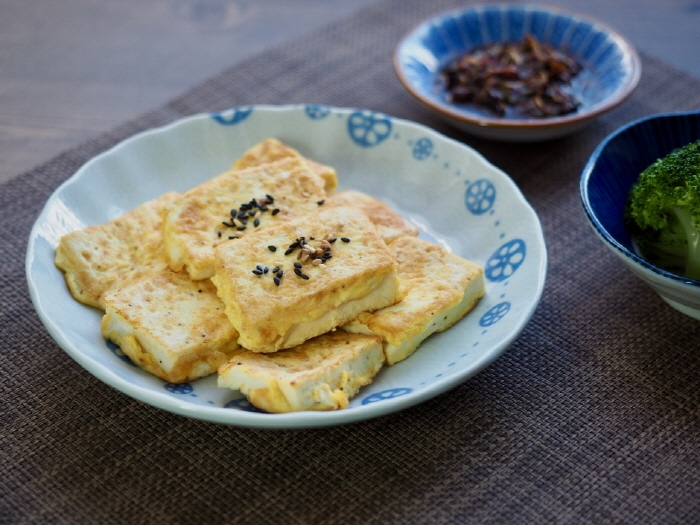
Bean curd
Bean curd, or tofu, is a highly nutritious food item that it is even referred to as “meat from land.” Not only is it nutritious, it is also very versatile and can become a part of your diet in a variety of ways. Vegetarians are usually recommended to eat soft bean curd as is accompanied by a soy sauce or simply pan-fry it in slices. Other Korean menus that use bean curd, such as soft bean curd jjigae or dubu jorim (braised bean curd), mostly add in salted shrimp to enhance flavors.
Tip Kimchi guide for vegetariansMany people assume that kimchi is a vegetarian-friendly dish. On the contrary, kimchi seasoning most often contains salted seafood, fish sauce, meat broth or other similar favoring ingredients. Some regional kimchi recipes also require ingredients such as abalone, cutlass fish, and pork.
Vegan Certification
One of the easiest way to check if a product is vegan while shopping in Korea is to look for a certified vegan logo. Several vegan certification institutions worldwide issue such logos to inform consumers that the product does not contain any animal products or byproducts and has not been tested on animals. Products with these certified vegan logos can be assured to have been assessed and verified by a vegan certification institution.
Vegan Standard Certification International Institution
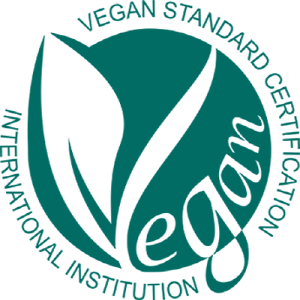
Korea Agency of Vegan Certification and Services
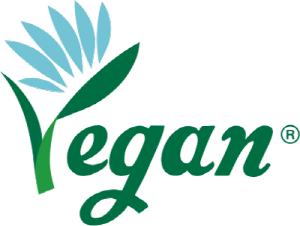
Vegan Society

V-Label International

EVE Vegan

Cruelty Free International
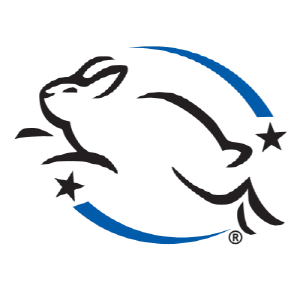 Tip Looking for Muslim-friendly restaurants?
Tip Looking for Muslim-friendly restaurants?Check out Muslim-friendly Travel
Tip Interested in recommended vegetarian restaurants in Seoul?This page was last updated in October 2023, and therefore information may differ from what is presented here.
1330 Korea Travel Hotline: +82-2-1330 (Korean, English, Japanese, Chinese, Russian, Vietnamese, Thai, Malay)





